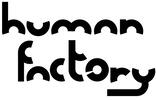optimal UX design . |

When your customer uses your software, the individual buttons clicked are like words, and the combination of buttons clicked is like a sentence telling the software what to do. When you decide how users should go about interacting with the software, it's therefore like creating a language, with a vocabulary of button-click choices, and a grammar determined by the sorts of allowable choices at each stage.
But not every language is equally well designed.
One could have a separate button for each of the many different possible functions the user may wish to do, but the trouble with this is that there would then be too many distinct button types (one for each sentence, or, that is, each sentence would just have one word in it).
At the other extreme, one could have just two button types, maybe "yes" or "no", and the software guides the user through a series of prompts to the needed software function. But the trouble with this is that each "sentence" (the sequence of button presses) would be too long, and the user would be exhausted.
Somewhere in between these extremes there is an optimal solution. And we can find it.
Human Factory scientists have worked on such optimal structures for the human brain, and even for the English language itself (which does, it turns out, have approximately the optimal structure, as you can read about in this 2008 paper).
And the Human Factory can compute the optimal language (and hierarchical structure) for your software, and give you the deep theoretico-mathematical guidance that UX designers cannot give.
But not every language is equally well designed.
One could have a separate button for each of the many different possible functions the user may wish to do, but the trouble with this is that there would then be too many distinct button types (one for each sentence, or, that is, each sentence would just have one word in it).
At the other extreme, one could have just two button types, maybe "yes" or "no", and the software guides the user through a series of prompts to the needed software function. But the trouble with this is that each "sentence" (the sequence of button presses) would be too long, and the user would be exhausted.
Somewhere in between these extremes there is an optimal solution. And we can find it.
Human Factory scientists have worked on such optimal structures for the human brain, and even for the English language itself (which does, it turns out, have approximately the optimal structure, as you can read about in this 2008 paper).
And the Human Factory can compute the optimal language (and hierarchical structure) for your software, and give you the deep theoretico-mathematical guidance that UX designers cannot give.
